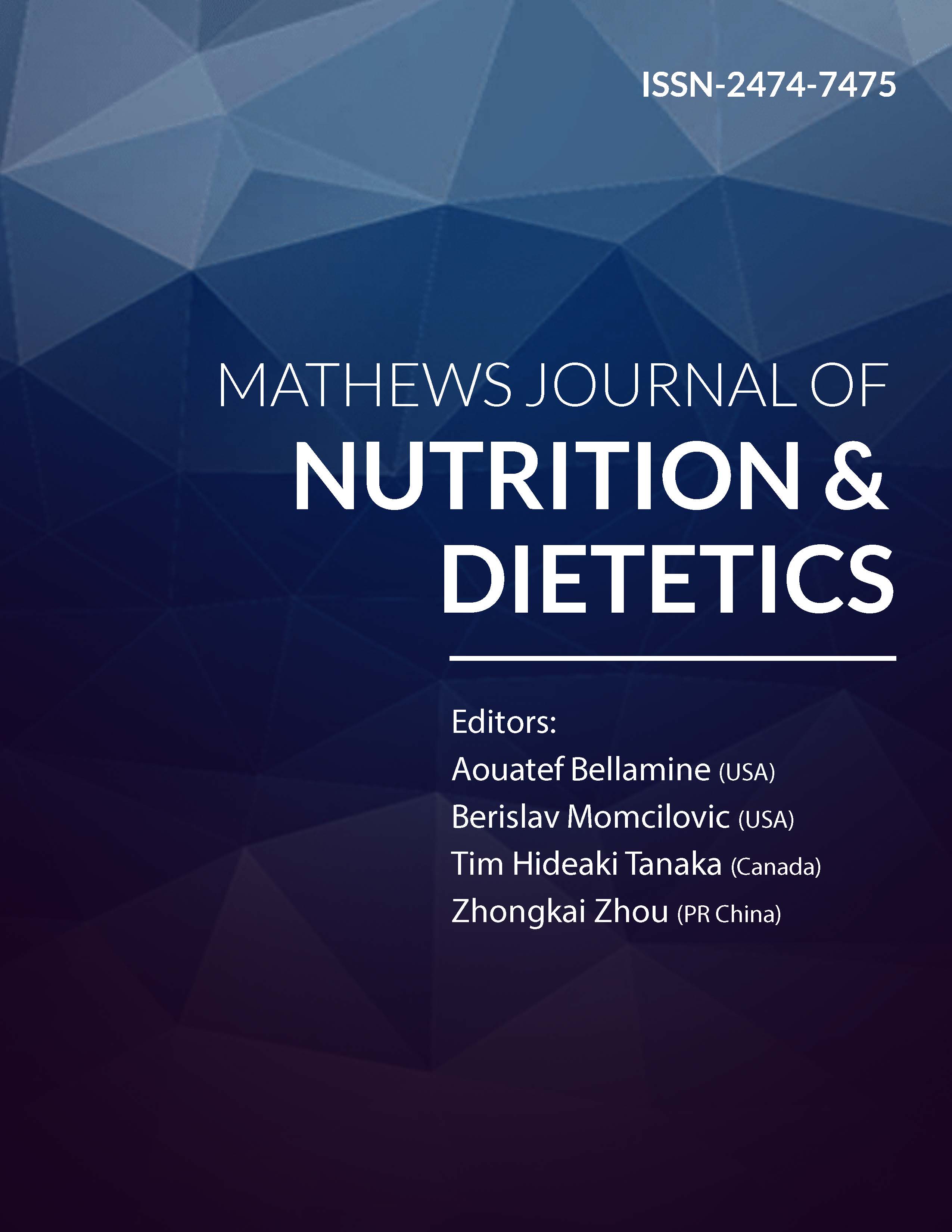
Information Links
Previous Issues Volume 7, Issue 3 - 2024
Prevalence of Dietary Diversity Practice and Associated Factors among Women of Reproductive Age in Asaita Districts, Ethiopia
Alebachew Abebe*
Department of Statistics, College of Computing and Informatics, Haramaya University, Ethiopia
*Corresponding author: Alebachew Abebe, Department of Statistics, College of Computing and Informatics, Haramaya University, P.O. Box: 138, Dire Dawa, Ethiopia, Phone No: +251948691620, E-mail: [email protected]
Received Date: May 22, 2024
Published Date: September 30, 2024
Citation: Alebachew A. (2024). Prevalence of Dietary Diversity Practice and Associated Factors among Women of Reproductive Age in Asaita Districts, Ethiopia. Mathews J Nutr Diet. 7(3):40.
Copyrights: Alebachew A. © (2024).
ABSTRACT
Background: Both the mother and the newborn must have an adequate and healthy diet while the woman is in the reproductive stage of her life. Dietary diversity is a stand-in measure of adequate nutritional intake for women of reproductive age. Objective: The purpose of this study was to evaluate dietary variety practices and related variables among Ethiopian women of reproductive age in the Asaita districts of the Afar region. Methods: From February to March 2020, a community-based cross-sectional survey of 422 randomly chosen women of reproductive age was carried out in the Asaita districts. Using interviewer and 24-hour dietary recall techniques, data was gathered. SPSS version 25 was used to enter and evaluate the data. To evaluate the factors influencing dietary diversity, a standard logistic regression model was used, and possible factors were checked at P<0.05. Results: The mean score for dietary diversity was 4.17 with 1.11 SD. About 13.0%, 78.5%, and 8.5% of women in reproductive age, respectively, practiced low, medium and high dietary diversification. At the 5% level of significance, characteristics such as marital status, education level, Window in the home, cell phone ownership, bank account, refrigerator, television and cart were significantly connected with women's practice of dietary diversity. For each additional one-unit addition to the size of the female household's family, the odds of having a "low dietary" rather than a "high dietary" diet multiply by OR=0.665. The odds of a windowed home having poor dietary scores as opposed to high dietary scores are OR=2.793 times the odds of a Windowless home. Concussions: Marital status, window-filled home, cell phone ownership, bank account ownership, and refrigerator all had positive associations with dietary diversity, whereas family size, education level, television ownership and cart had negative associations with dietary diversity in women under the age of reproduction.
Keywords: Odds ratio, Women of Reproductive Age, Dietary Variety Score, and Chi-square Test.